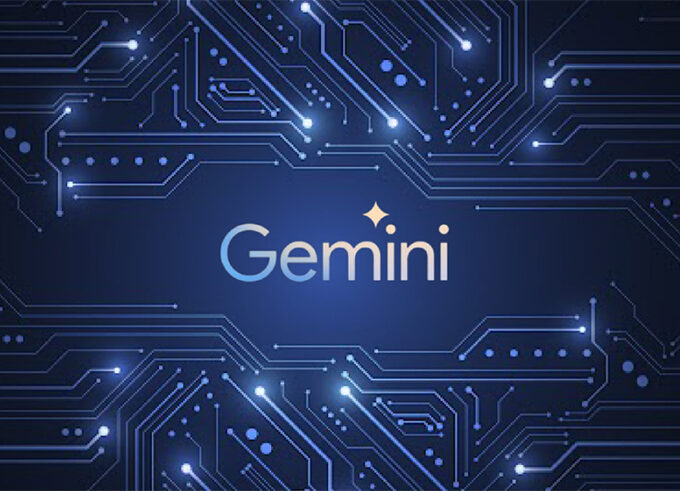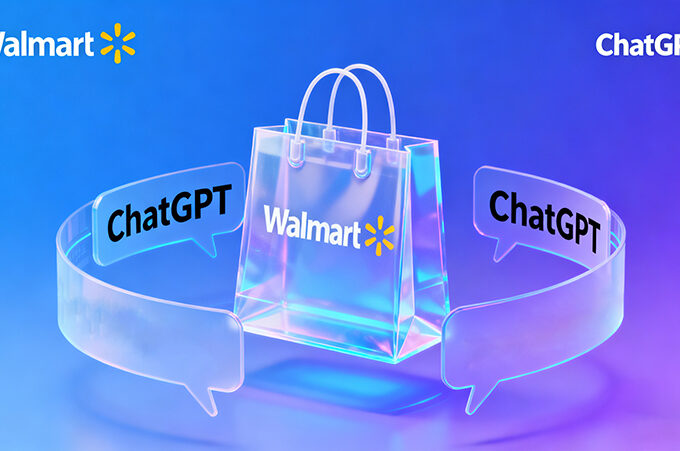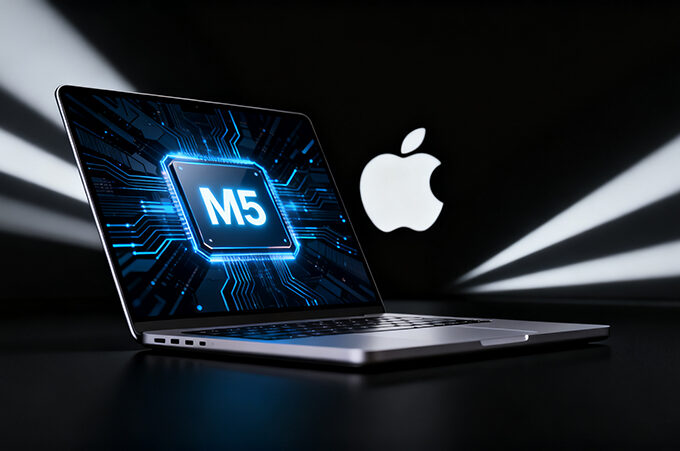ChatGPT is increasingly taking on the appearance of a super app. In just three short years, it has evolved from a simple AI chatbot into an all-encompassing, versatile assistant. Now, OpenAI is setting its sights on e-commerce, having recently launched a feature called “Instant Checkout.” This allows users to complete purchases directly within ChatGPT, eliminating the need to redirect to third-party e-commerce platforms like Amazon. Currently, the Instant Checkout feature only supports Etsy, the largest marketplace for handmade goods in North America. However, OpenAI has confirmed that over one million Shopify merchants, including brands like Glossier and Spanx, will soon be integrated. Even though major e-commerce platforms like Amazon and eBay haven’t joined yet, industry professionals overseas are already hailing that “ChatGPT will reshape the e-commerce landscape.”

So, what makes the Instant Checkout feature so remarkable? In a demo released by OpenAI, when a user asks ChatGPT, “Can you help me find a great housewarming gift for a friend? Maybe handmade ceramic tableware, white and brown, under $100,” ChatGPT can not only provide suggestions but also complete the purchase of a relevant product from Etsy in one step. In short, after a user describes what they want, ChatGPT will include recommendations for the most relevant products alongside its text response. Compared to the shopping features OpenAI released in the spring, Instant Checkout represents a revolution in the shopping experience. Previously, OpenAI only allowed users to search for products and view product information through ChatGPT; the AI’s suggestions would merely link out to the merchant’s website, forcing users to complete the transaction externally.
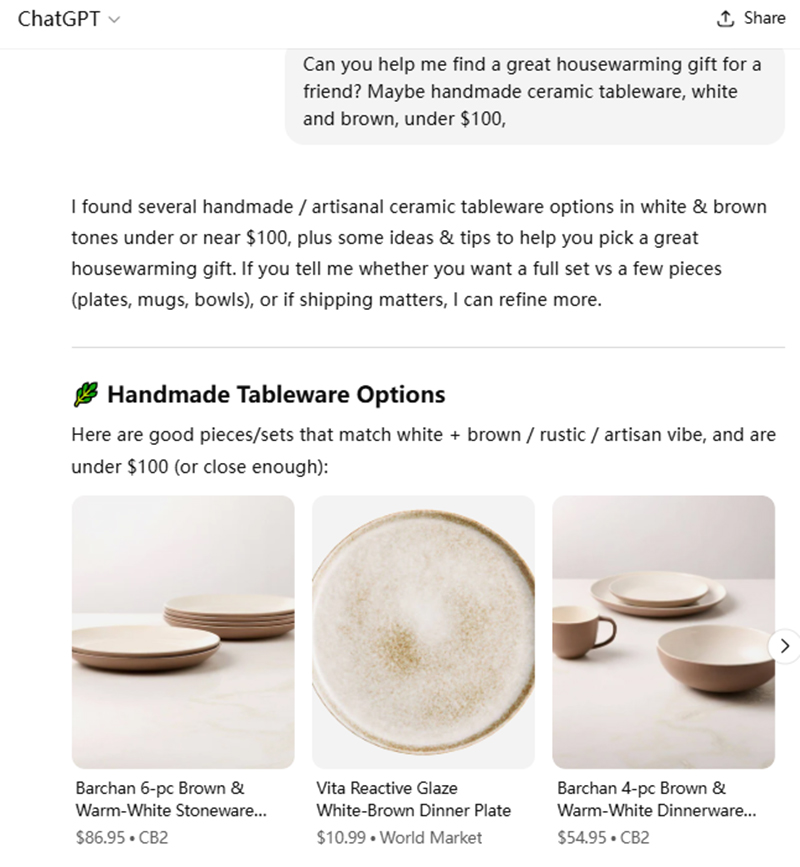
What are the drawbacks of completing transactions externally via links? Actually, WeChat is quite experienced with this issue. On May 20, 2021, WeChat announced it would no longer provide the “technical service for mini-programs to open Apps,” citing numerous user complaints about interrupted user experiences and forced redirects to Apps during mini-program use, which severely impacted the user experience. However, the underlying reality is that the act of “redirecting” means WeChat’s traffic leaks out, leading to a degree of its “pipelining” or being reduced to a conduit. In today’s world where mobile internet is ubiquitous, WeChat has become a new generation of internet infrastructure, thus inherently facing the risk of being pipelined. To avoid being seen as a mere traffic diversion tool, WeChat successively launched features like Moments, Official Accounts, and Mini Programs to continuously enrich its functionalities and keep users within its ecosystem as much as possible.
OpenAI clearly hopes for ChatGPT to become the infrastructure of the AI era but wants to avoid being pipelined itself. Hence, this “closed-loop thinking” drove them to launch the Instant Checkout feature. Beyond that, allowing users to shop directly through ChatGPT also involves profit considerations, as it represents a huge business opportunity. If ChatGPT drives massive traffic to Etsy and Shopify, it naturally has reason to take a cut—a logic strikingly similar to Apple’s App Store. Simultaneously, e-commerce sellers, who are hungry for traffic, are eager for new customer acquisition channels. This is why overseas e-commerce practitioners are cheering. Unlike the domestic Chinese e-commerce market, dominated by centralized giants like Taobao, JD.com, and Pinduoduo, the overseas e-commerce market is more decentralized, with a vast number of independent e-commerce sites existing alongside Amazon.
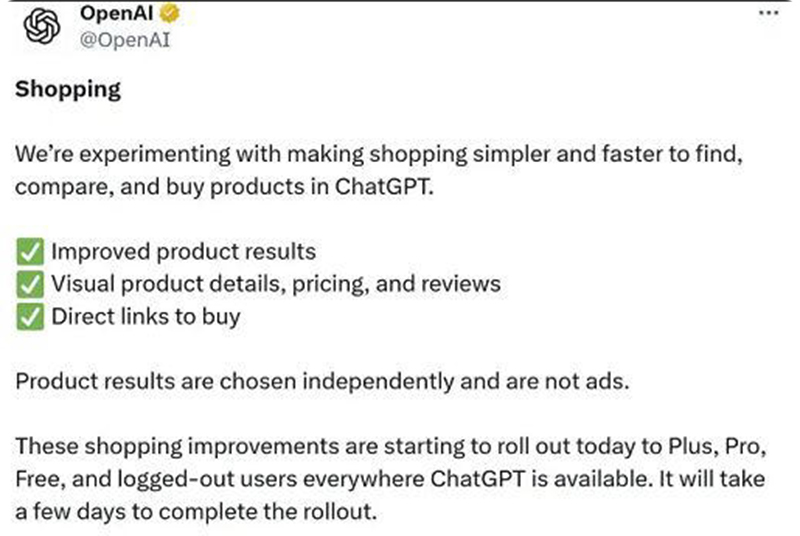
Compared to Amazon, eBay, or Bonanza, the biggest challenge for independent e-commerce sites isn’t necessarily uncompetitive pricing but a lack of influence and reach. Sellers on independent sites are typically very enthusiastic about advertising. For instance, Meta’s social platform Facebook became prominent partly by helping sellers convert public traffic into private traffic. In the current landscape, Google Search and Amazon are the starting points for most overseas consumers’ shopping journeys, and both have faced accusations of leveraging their advantages to favor their own products or partners. With the emergence of ChatGPT as a new channel, boasting 700 million weekly active users, it’s no wonder overseas e-commerce sellers are captivated. Even more encouraging for these sellers is that since June of this year, the proportion of female active users on ChatGPT has surpassed that of males for the first time.
But why is OpenAI so confident that the Instant Checkout feature will win user favor? Michelle Fradin, Head of Business at OpenAI for ChatGPT, stated that they observed a significant volume of user queries related to shopping. These can be very specific, like “help me find a pair of black boots,” or broader, like “how to plan a birthday party for 12 kids.” Based on this user demand, OpenAI aims to make completing the entire shopping journey within ChatGPT easier for users, while also providing merchants with a way to directly convert user queries into orders. In a sense, ChatGPT’s Instant Checkout feature is realizing the promise of the exposed Silicon Valley AI scam “Nate,” which claimed to use AI to simplify shopping, allowing users to make purchases on any e-commerce site with a simple click, bypassing tedious checkout processes entirely without human intervention.
The latest news reported that unlike the domestic market, overseas online payments are characterized by fragmented channels and incompatible technical systems. This makes the online shopping experience far less convenient for overseas consumers compared to China. Therefore, “one-click ordering” holds significant positive value for them. Furthermore, the act of “redirecting” itself can suppress purchase intent. After all, a redirect means waiting, and the time spent waiting can dampen the consumer’s shopping enthusiasm, ultimately affecting the purchase decision. With the Instant Checkout feature, ChatGPT users can simply click the “Buy” button in the AI’s response, confirm their order, shipping, and payment details—all without interrupting the conversation. This significantly shortens the consumer’s purchase decision path, enabling impulse buys almost seamlessly. Ultimately, making it easier for consumers to spend money is the fundamental reason overseas e-commerce practitioners welcome ChatGPT’s new Instant Checkout feature.









